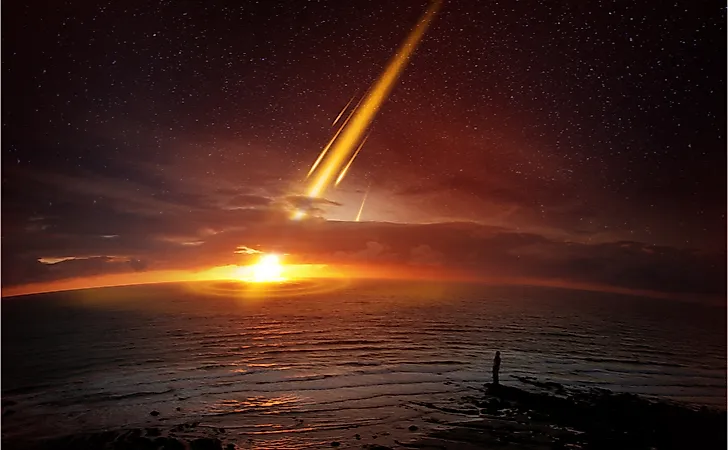What Happened During The Ordovician Extinction Event?

An extinction event is a widespread and rapid decrease in the diversity of organisms. There have been 5-20 major mass extinctions in the last 540 million years. One of the past five major extinction events in the history of the Earth is the Ordovician-Silurian extinction event. It is regarded as one of the most widespread, leading to the extinction of approximately 85% of species of marine animals.
The Ordovician-Silurian Extinctions
The Ordovician-Silurian is a combination of two extinction events regarded as the second-largest mass extinction in terms of the portion of species that became extinct. The extinction events mark the boundary between Silurian and Ordovician periods and took place during the Hirnatian Age (approximately 445 to 443 million years ago) of the Ordovician Period through to the Rhuddanian Age (approximately 443 to 440 million years ago) of the Silurian Age. The Ordovician-Silurian extinction was the first event of the five major Phanerozoic events and was also first to greatly affect the animal-based communities. The extinction event was marked by several changes in biological responsive oxygen and carbon isotopes. The lack of adequate oxygen greatly affected the organisms that lived in this period.
Impact of the Extinction Events
The extinction events led to about 85% of all the Ordovician species becoming extinct. According to the statistics, the decrease in diversity during this period was as a result of a sharp increase in extinction rather than a decrease in speciation. Although all the major animal groups survived, each of the groups lost an important member. Some of the groups affected were graptolites, corals, trilobites, crinoids, and brachiopods. Brachiopods, in particular, display the effects of the extinction event since they were the hardest hit. Graptolites almost came close to total extinction. The extinction events ended when the melting glacier raised the sea level and caused it to stabilize, resulting in the rebounding of life’s diversity.
Possible Causes of the Extinction Event
The factors that led to the Ordovician-Silurian extinctions were similar to those that led to the other four major Phanerozoic extinction events. Some of the main factors that contributed to the five extinction events included climate fluctuations, changes in sea levels, and volcanism which led to the emission of harmful gases into the atmosphere. Some scientists believe that the initial extinction resulted from the gamma-ray burst that originated from hypernova. The burst which lasted about 10 seconds may have caused the Earth’s atmosphere to immediately lose about one-third of its ozone, exposing the organisms to extreme ultraviolet radiation. The Late Ordovician Extinction may have resulted from environmental changes caused by glaciation. The change in sea level caused by the isolation of the water in the ice cap led to the elimination of the habitat of most endemic communities. During the spread of anoxia, toxic metals on the floor of the ocean got dissolved in water, leading to the death of organisms on lower levels of the food chains and subsequently the starvation and death of the organisms on the higher levels of the food chains.











